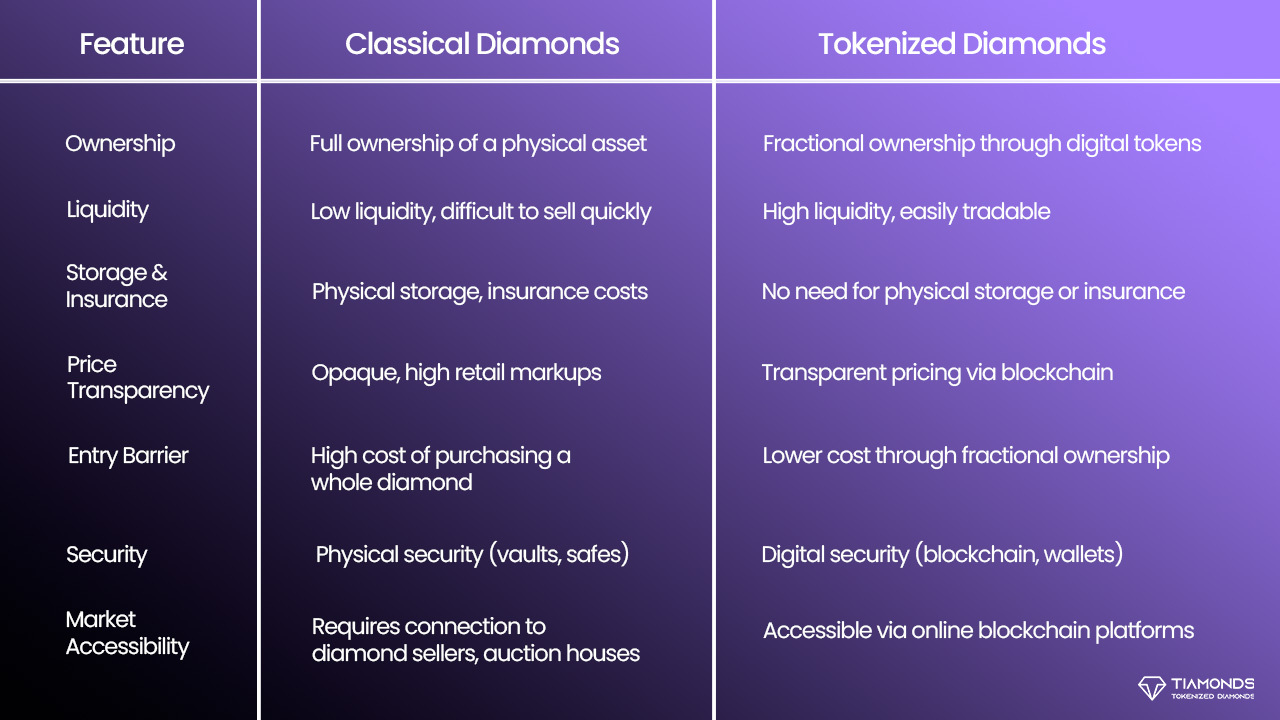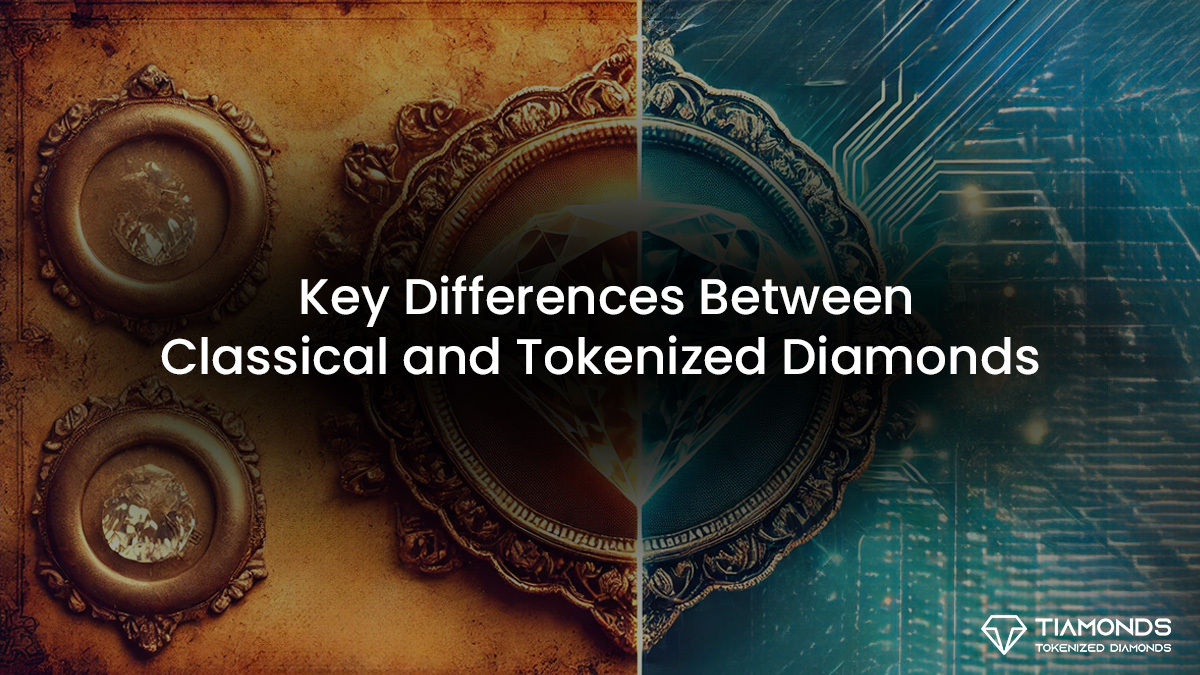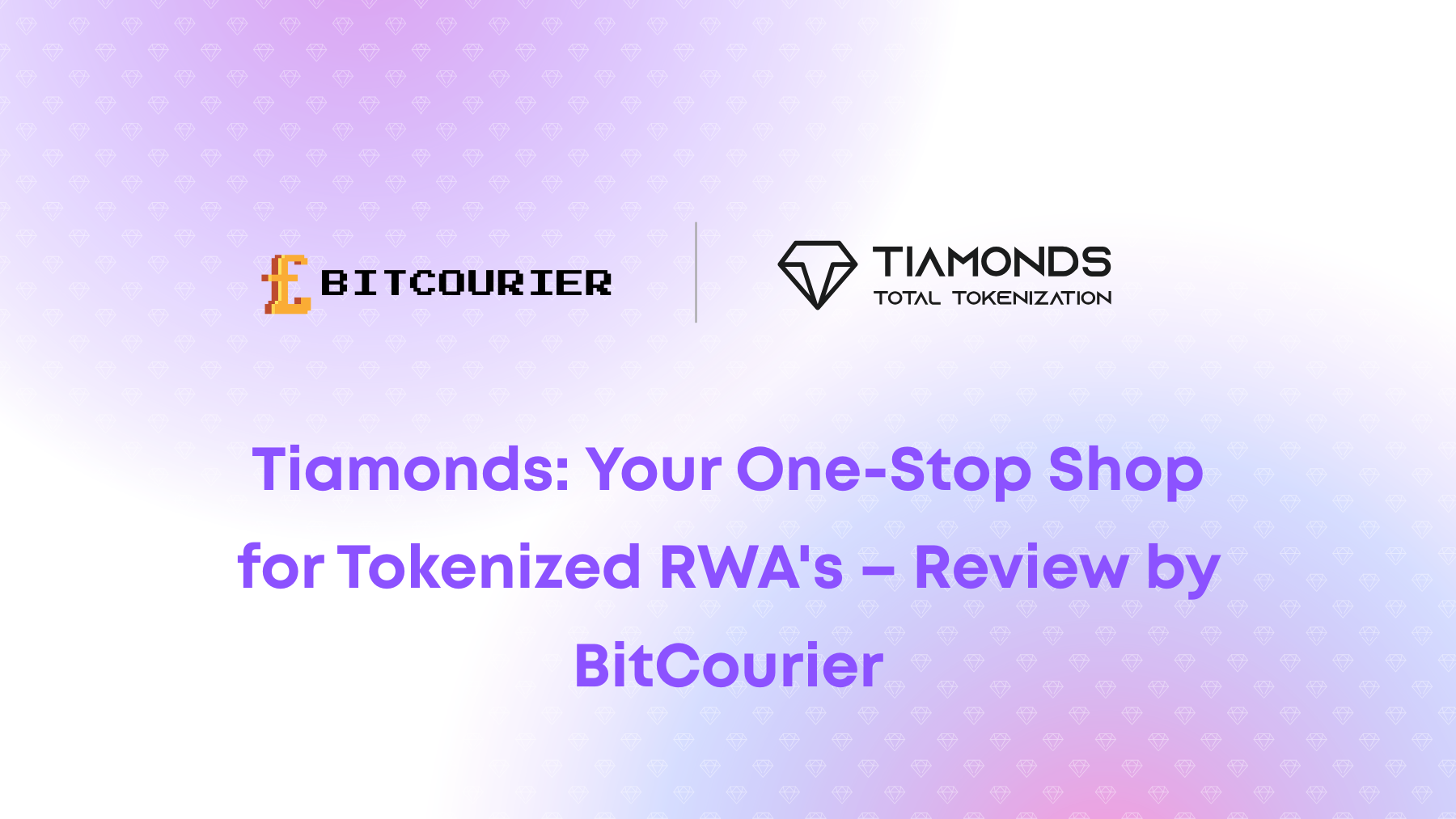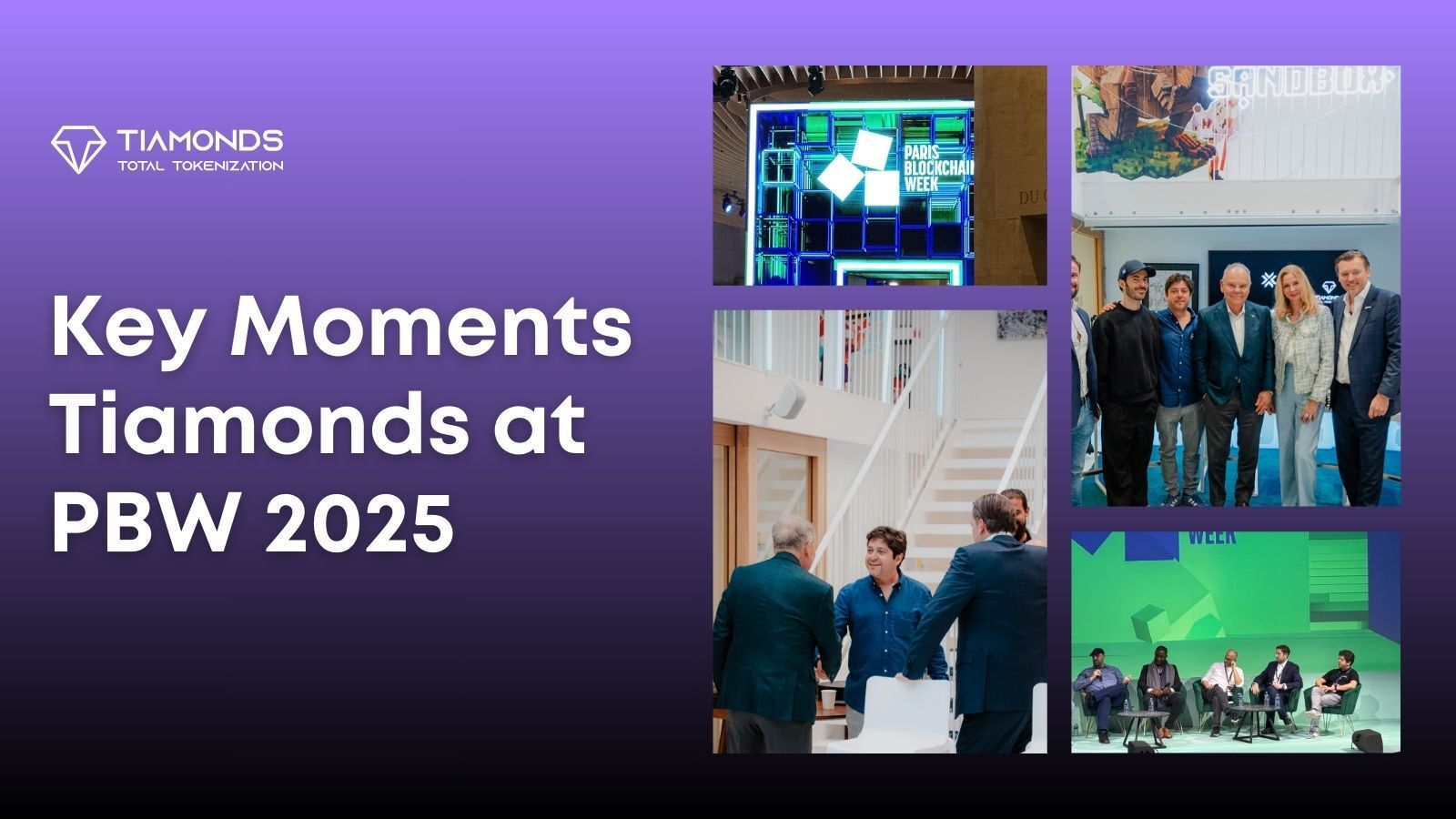Diamonds have been a representation of wealth, prestige, and timeless beauty for a long time. For centuries, these precious stones have served as a reliable source of value for both investors and collectors. Nevertheless, tokenized diamonds are becoming increasingly popular as technology continues to advance. This innovative method combines blockchain technology with the realm of traditional assets. It provides a novel method of investing and trading in diamonds.
Table of Contents:
ToggleWhat are Classical Diamonds?
Conventional markets extract, cut, and sell the physical jewels known as classical diamonds. Auction houses, wholesalers, and retailers acquire and trade these gemstones. Investors typically store classical diamonds in vaults, safes, or personal collections.
Benefits of Classical Diamonds
An individual owns a tangible item that they can wear or hold as a valuable asset.
Cultural Legacy: Diamonds have been historically associated with social status, affection, and luxury. This cultural significance sustains their value.
No Technology Barrier: The acquisition of a diamond from a jeweler or auction house is a simple process that does not necessitate any technical expertise.
Drawbacks of Classical Diamonds
Liquidity Challenges: The rapid sale of diamonds can be difficult to achieve without incurring substantial fees or losses. People frequently classify diamond resale markets as illiquid.
Storage and insurance expenses: Safekeeping physical diamonds frequently necessitates additional expenses for security and secure storage.
Price Transparency: The pricing of classical diamonds can be opaque, with a substantial markup in retail settings. When various vendors price the same diamond differently, it becomes more challenging for buyers to ensure they are getting a fair deal.
What are Tokenized Diamonds?
The technology of blockchain facilitates the digital representation of ownership in a tangible diamond, known as tokenized diamonds. This framework divides diamonds into tokens, each token representing a portion of the ownership of a specific stone. These tokens, like cryptocurrencies, are transferable on digital platforms and are available for purchase and sale.
The Mechanism of Tokenization
Blockchain Platform: A secure facility stores diamonds and records their ownership on a blockchain, ensuring transparency and immutability.
Fractional ownership: It is a form of ownership in which investors acquire a portion of a diamond, rather than the entire stone. This reduces the threshold for diamond investment.
Trade on Digital Markets: Decentralized exchanges allow for the swapping of these diamonds, a feature that classical diamonds lack.
Benefits of Tokenized Diamonds
Enhanced Liquidity: Blockchain platforms facilitate convenient trading, facilitating the purchase and sale of diamond tokens at any moment, similar to stocks or cryptocurrencies.
Fractional ownership: This enables investors to acquire minor portions of diamonds without the necessity of purchasing an entire stone, thereby reducing entry barriers.
Transparency: Blockchain guarantees that the history of each diamond, including its origin, ownership, and certification, is identifiable. This guarantees ethical sourcing of diamonds for investors and aids in the eradication of fraud.
Reduced Storage Costs: Investors are relieved of the burden of physical storage, insurance, and shipping expenses due to the digital representation of tokenized diamonds.
Key Differences Between Classical and Tokenized Diamonds

Facts
Market Size: In 2022, experts estimated the global diamond market to be worth approximately $84 billion, and they anticipate it to continue expanding in the coming years. This encompasses both traditional diamond sales and more recent investment methods, such as tokenized diamonds.
Resale Diamond Challenges: Rapaport’s research indicates that resale diamonds frequently sell for 30–50% less than their original asking price. Primarily as a result of retail markups and liquidity constraints in the secondary market.
Tokenization Growth: The World Economic Forum’s report indicates that the tokenization of assets, such as diamonds, is expected to reach a trillion-dollar market by 2030. Diamonds are a component of a more extensive trend that involves the tokenization of physical assets, such as real estate, art, and luxury objects.
Blockchain Adoption: The trend of tokenizing luxury goods is rapidly gathering traction, as platforms such as Tiamonds offer real diamond ownership with the security of blockchain.
These are:
- 1-1 backed by natural diamonds
- Ethically sourced
- Redeemable anytime
- LCX & GIA certified
- Safe vault storage
- $TIA rewards
Which Is the Better Investment?
Ultimately, an investor’s objectives and inclinations dictate the decision between classical and tokenized diamonds. Classical diamonds are the optimal choice for individuals who prioritize tangible assets with cultural significance and are prepared to navigate the intricacies of storage, insurance, and resale. Conversely, tokenized diamonds provide contemporary investors with a more transparent, liquid, and adaptable approach to the diamond market.
Especially for those who are already acquainted with blockchain technology and digital assets, tokenized diamonds can be an appealing entry point for investors who are new to the space. While utilizing blockchain’s liquidity and transparency, they offer a method to diversify investments with a tangible asset.
In Conclusion
Classical and tokenized diamonds are viable investment opportunities for those seeking to diversify their portfolios as the investment landscape continues to evolve. Tokenized diamonds provide a forward-thinking, accessible, and efficient method of engaging with the diamond market, while classical diamonds offer the allure of tradition and tangible ownership.
Given the ongoing expansion of the global tokenization trend, it is worthwhile to contemplate the potential role of digital assets in the future of investing. For those who embrace this new model, the diamond market is now about innovation as well as luxury.



